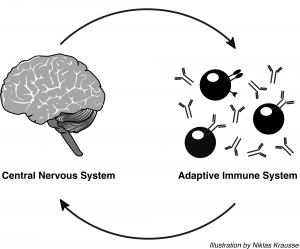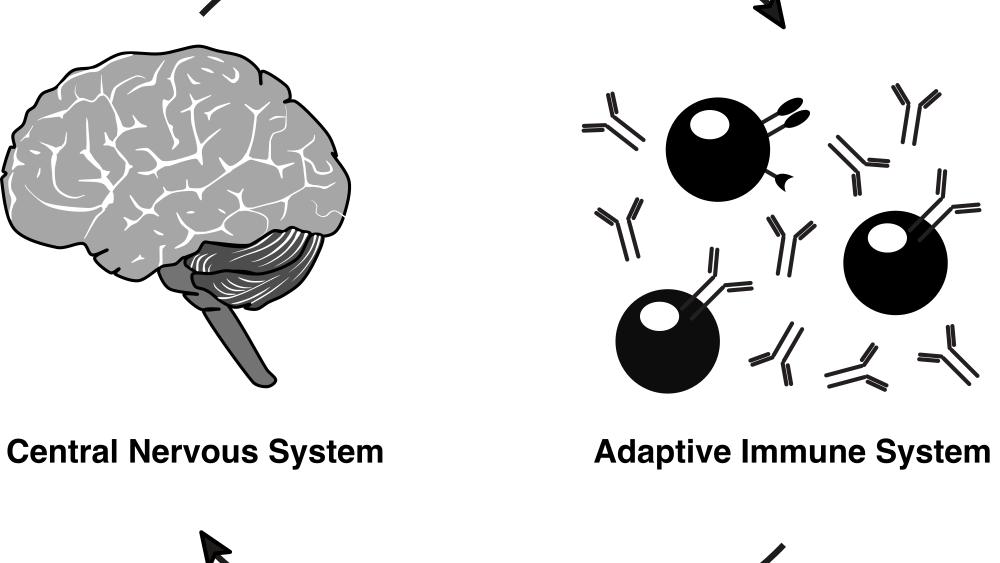By Niklas Krausse

How does our immune system control our behavior?
The immune system is the body’s defense system, whereas the central nervous system is the control unit. It is easy to think about them as separate and isolated – but they are much more closely interwoven than one would think.
Pathogens have always been a driving force in human evolution. Harmful viruses, bacteria and parasites have forced us to adapt and develop better defense strategies. One theory suggests the co-evolution of the immune and the central nervous system. At least partly, our cognitive development could be the result of pathogen evading strategies. The never-ending arms race between pathogens and our immune system may also have influenced our highly adaptive central nervous system. New behavior strategies could have evolved to prevent the spread of infections. In turn, the immune system might have evolved ways to communicate with the nervous system in order to respond to a threat. Undoubtable, however, are the similarities between the molecular and cellular features of the two systems1,2.
In a study from 2016, researchers found that mice without an adaptive immune system (which mostly consists of B and T cells) showed despaired social behavior3. They observed that these immune-deficient mice lacked a social preference for another mouse over an object, unlike wild-type mice which always chose to socialize with other mice. Interestingly, this disturbed social behavior could be reversed by simply injecting immune cells in the immune-deficient mice.
The same group of researchers were able to show that loss of meningeal T cells causes the disturbance in social behavior. The “meninges” are the three membranes that enclose and protect the brain and the spinal cord4. These membranes, and the spaces between them, harbor a variety of immune cells that are in close contact with the central nervous system without actually infiltrating it – communication between the two systems takes place via soluble molecules known as cytokines. Consequently, the research team identified the T cell-derived cytokine “interferon-gamma” (IFN-γ) as the mediator between immunity and the neuronal connections that control social behavior.
In an earlier study from 2010, researchers had found a similar connection between meningeal T cells and the regulation of learning and memory behavior in mice5. They showed that the number of T cells increased in the meninges of mice trained in a learning and memory test. Depletion of these cells caused mice to perform worse in the same test. The learning and memory performance was regulated by another cytokine secreted by meningeal T cells, “interleukin-4” (IL-4). Besides other effects, IL-4 was increasing the production of a molecule in neural cells that is key for learning and memory processes.
It is easy to think of an organism as the sum of different, strictly separated systems – all required for a specialized task, but living organisms cannot be described in the same way as artificial objects. There is much more exchange and interaction between the different parts. Neuroimmunology is a great example how the combination of different research fields may help to better understand complex biological processes such as learning and memory, social behavior, and the development of neurodegenerative and autoimmune diseases.

